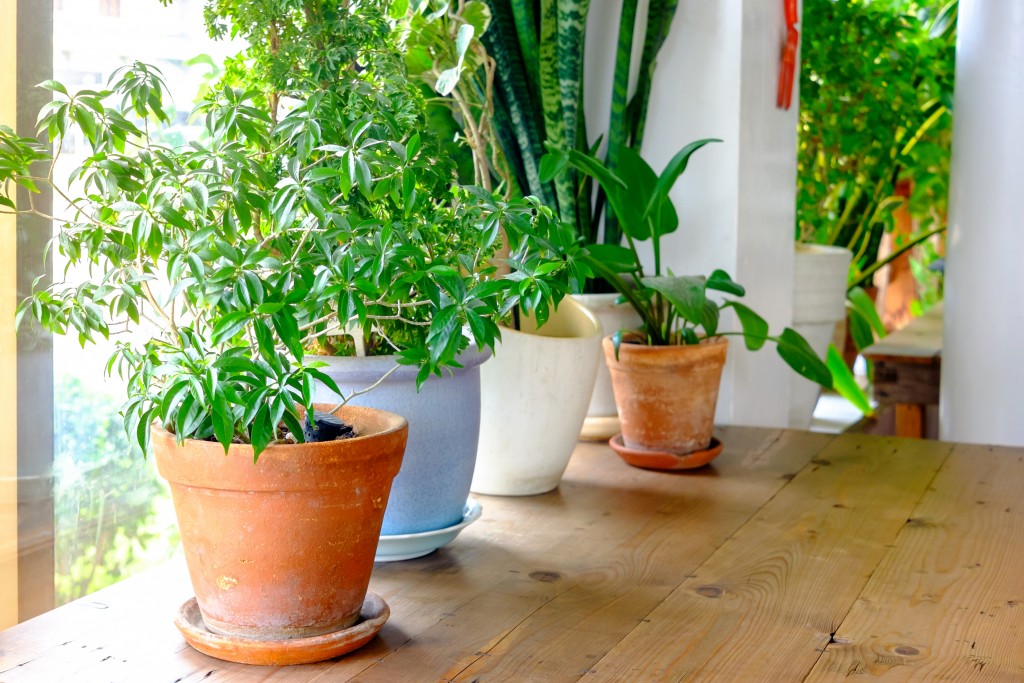Since the pandemic, a surprising number of us have developed an interest in raising plants. Those with huge outdoor spaces practically turned their yards into a botanical garden. But of course, those who aren’t blessed with that much space didn’t back down; they settled for indoor plants, which livened up their abodes and boosted its air quality.
However, because plenty of us are only newbies in the “plant-momma” life, we often find our new babies dying on us. Their rich green leaves grow paler by the day until they wilt and succumb altogether.
It is frustrating, but you are not alone in this struggle. If your indoor plants keep dying, chances are it’s your windows causing it. It’s also possible that you’re overwatering, but if you’re sure that you never went wrong in the watering schedule, then it’s time to consider the placement of your plants.
In our homes, there are four possible window placements: north, south, east, and west. The intensity of light received by your plants depends on these window placements. Let’s figure out how they differ and what plants are best suited for each window.
North-Facing Window
These windows receive a relatively small amount of light. In the US, they tend to have the weakest light intensity and are usually in deep shade throughout the day. However, it doesn’t mean that they are incapable of nourishing plants. Some plants thrive best by a north-facing window.
Low-light plants develop a deep and rich shade of green during the winter and even all-year-round. You can have them hung for a beautiful overhead display or put them atop a table against the sill. (It isn’t advisable to put plants right on top of the windowsill, because you may damage the sill when you water.)
Some of the best plants for north-facing windows are the following:
- Orchids
- Philodendron
- Monstera adansonii
- Cyclamen
- Aspidistra
- Gardenia
South-facing Windows
In the US, south-facing windows tend to have the highest light intensity. They’re the best place to keep indoor plants, though, of course, not every indoor plant is suited to them as well.
It is also important to note that because the light from south-facing windows is the brightest, the glass can magnify its heat and cause your plants to burn. Hence, before putting your plants anywhere near it, consider monitoring the movement of the light for several days first. Find out the space’s temperature at various times of the day as well. Take pictures and refer to them as you select plants.
To ensure that your south-facing plants won’t burn, provide a little shade through custom window treatments, especially during summer. Don’t forget adequate ventilation, too.

Once you’re done making your south-facing space habitable, here some of the best plants to select:
- Cactus and succulents
- Dracaenas
- Everblooming Gardenias
- Crotons
- Cordyline
- Geranium
East-facing Windows
These windows benefit from the morning sun when the heat isn’t as intense yet. They’re best for plants that require moderate sunlight or morning sun only.
Several ornamental plants, mostly larger and taller ones, thrive best in east-facing windows. Here are some of the most popular picks:
- Areca palm
- Japanese fatsia
- Monstera adansonii
- Fiddle leaf fig
- Umbrella tree
- Hoya carnosa
West-facing Windows
These are the windows that get all the afternoon and evening sun. They are best for plants that require medium light. However, the light intensity they receive during the summer can be quite intense as well.
Here are the plants that prosper best in west-facing windows:
- Urn plant
- Zebra plant
- Norfolk island pine
- Parlor palm
- Ti plant
- Jade plant
How to Measure Light Intensity
If you’re unsure about your space’s light intensity, try this quick test: Hold your hand about a foot above the place where you plan to put your plant. If your shadow is crisp and clear, then the light is bright and intense. On the contrary, if the light is just enough for reading, then it’s low-light. Medium light is somewhere in between the two, creating a fuzzy shadow.
Watering Schedule
New plant-mommas tend to follow a strict watering schedule. But this may do more harm than good because the chances of over-watering are high. Instead of keeping to a schedule, test the soil to see whether the plant is due for watering.
The finger test is the simplest testing method. Stick your index finger or any thin wooden stick into the soil to check if it’s still moist. If the top two inches of it feels dry, then that’s your call for watering.
Caring for indoor plants is tricky initially, so don’t be hard on yourself when you make mistakes. It’s normal to mess up a couple of times before getting it right, so keep doing your research and treating your plants lovingly. Shower them with nice words every day!

